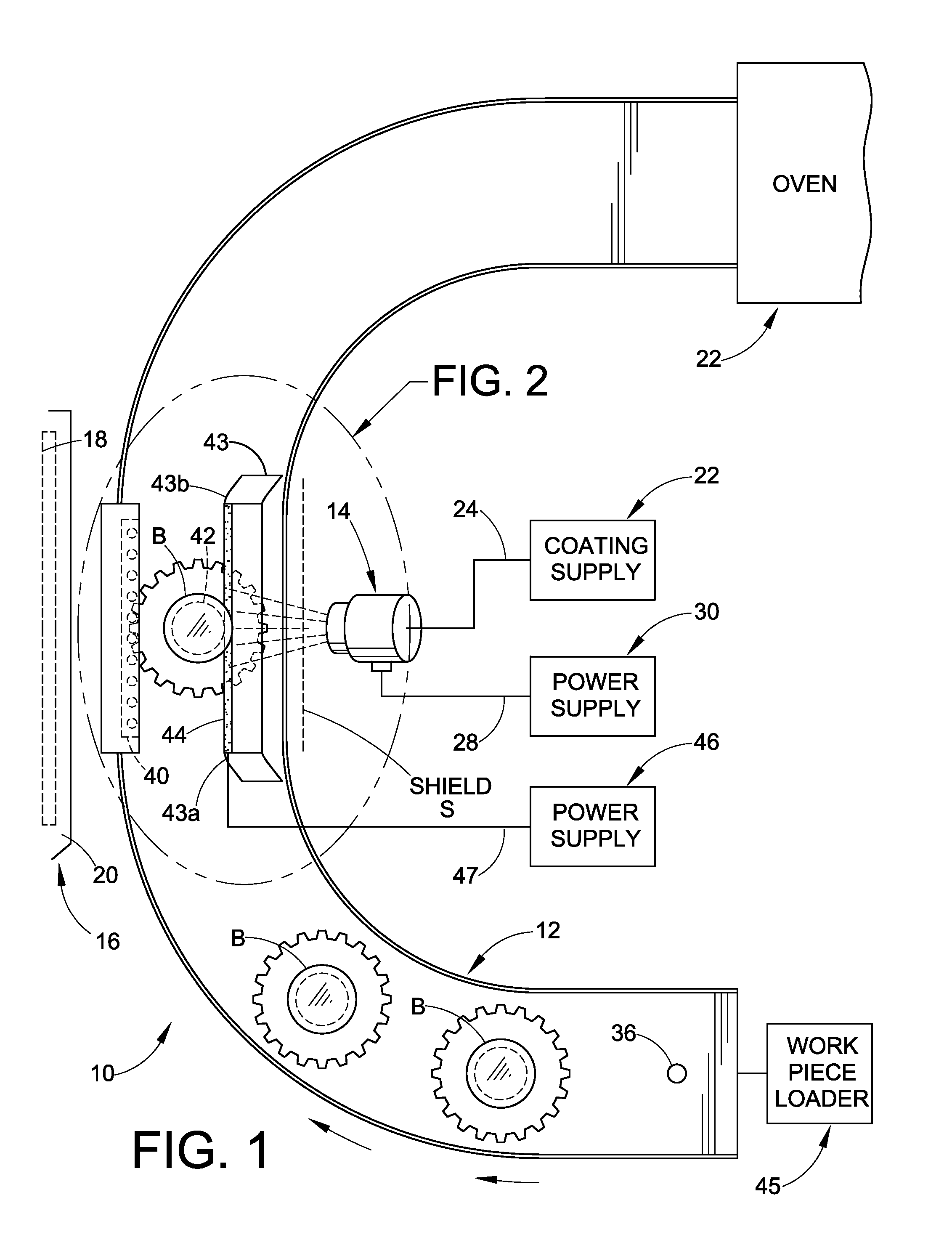Low capacitance container coating system and method
- Summary
- Abstract
- Description
- Claims
- Application Information
AI Technical Summary
Benefits of technology
Problems solved by technology
Method used
Image
Examples
Embodiment Construction
[0031]Although the various embodiments are described herein with specific reference to liquid coating of glass containers, the inventions are not limited to such specific applications. The inventions will find application to all types of coating material used for electrostatic coating of low conductivity containers, including liquid coating material and powder coating material and so on. Moreover, the inventions are not limited to any particular type, size, shape or material of non-conductive or low conductivity work pieces. The inventions will find application to many work pieces including but not limited to glass bottle and other glass containers, plastic bottles and other plastic containers and so on. An example of one type of coating is a UV coating, but the inventions are not limited to any particular coating material.
[0032]While various inventive aspects, concepts and features of the inventions may be described and illustrated herein as embodied in combination in the exemplary...
PUM
 Login to View More
Login to View More Abstract
Description
Claims
Application Information
 Login to View More
Login to View More - R&D
- Intellectual Property
- Life Sciences
- Materials
- Tech Scout
- Unparalleled Data Quality
- Higher Quality Content
- 60% Fewer Hallucinations
Browse by: Latest US Patents, China's latest patents, Technical Efficacy Thesaurus, Application Domain, Technology Topic, Popular Technical Reports.
© 2025 PatSnap. All rights reserved.Legal|Privacy policy|Modern Slavery Act Transparency Statement|Sitemap|About US| Contact US: help@patsnap.com



